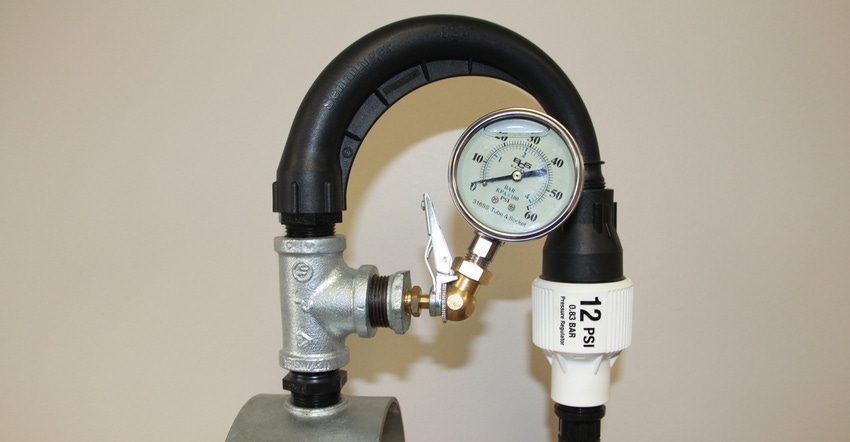March 30, 2020

Center pivots, like every other machine on the farm, need regular tune-ups to provide efficient and safe performance. This spring, before irrigation is needed, is a great time to get the pivots serviced and make any needed repairs.
Always keep safety in mind when working on farm equipment. Pivots are no exception. If the system is powered in any way with electricity, always turn the disconnect switch to the off position and follow Lock Out/Tag Out procedures before doing any work on it.
An example of part of the Lock Out/Tag Out procedures may be placing a padlock on the disconnect switch to prevent someone else from turning it back on and starting the system. Pivots are long machines, and it is difficult for people to see if someone is working on them.
In addition, with remote start systems today, it is more important than ever, even if you are just fixing a flat tire, let alone if you are working on the electrical system.
The operator’s manual has a good section on items to check before starting the pivot in the spring and should be followed. Here's a look at a few things to add to the standard checklist, which can yield some big economic returns.
Spring pivot checklist
Make sure sprinklers are working correctly. After completing the manufacturer’s spring startup checklist and flushing the system, bring the system up to pressure to check for leaks and make sure the sprinklers all are working correctly.
One of the easiest ways to check sprinklers is to get back a little way from the pivot and get at an angle where you can see sunlight gleaming off the water. From this point, closely look for any leaks at each individual sprinkler, as well as the overall pattern, looking for any inconsistencies. You can use binoculars if it is helpful.
The overall pattern should show less water closer to the pivot point, gradually increasing toward the outer, or distal, end of the pivot. This is a good procedure to follow every few weeks during the irrigation season as well.
Check the system pressure. After fixing any problems with leaks and plugged or broken sprinklers, it is time to move on to checking the system pressure.
Pressure is the most critical thing to monitor while the pivot is operating. If the pressure is not right, then the system is not operating correctly. The designed operating pressure for the machine can be found in the sprinkler chart (the dealer the sprinkler package was purchased from can print a new one if it is lost).
Most every pivot is designed to operate at a different pressure because of different well capacities, elevation differences in the field, sprinkler requirements and the pivot lateral pipe size. If the pressure is a little high, keep in mind it is early in the season and the water table may drop some, effectively lowering the water pressure.
If the pressure is already too low, it is important to resolve the problem because it will cause poor water application uniformity, resulting in needing to pump extra water and lowering the yield.
Install a Schrader valve. A good strategy to measure the operating pressure of a pivot is to install a Schrader valve instead of a pressure gauge. Get the ones that have quarter-inch NPT male thread and install it into the port where the gauge was before.
Then attach an air chuck with a grip to a high-quality gauge that can be moved between pivots. With this setup, the pressure can be checked on several pivots with just one gauge that can be stored inside where it is protected from the weather. All of the needed parts to make this can be purchased at the local farm supply store.
Schrader valves also can be installed at the distal, or outer, end of the machine, which is the most critical point to check the pressure. The best procedure is to move the machine to the highest point of the field and, if equipped with an end gun, turn it on. Then clip the pressure gauge on, start the well and, after it is up to operating pressure, take the reading.
It should be 5 pounds per square inch more than the rating of the pressure regulators. If the pressure is correct, check and record the pressure at the pivot point for future reference, so you will not need to regularly check it at the distal end of the pivot.
Irrigation season-ready
The center pivots have been off since last summer and, because of the very wet conditions in 2019, some pivots have been off for almost two years, so it is important to check them out before you need to irrigate.
Start by completing the tasks on the manufacturer’s spring checklist, and then take the time to make sure the sprinklers are working properly and have the correct pressure. For more information, visit go.unl.edu/pivotpressure.
Melvin is a Nebraska Extension irrigated cropping systems educator.
You May Also Like




